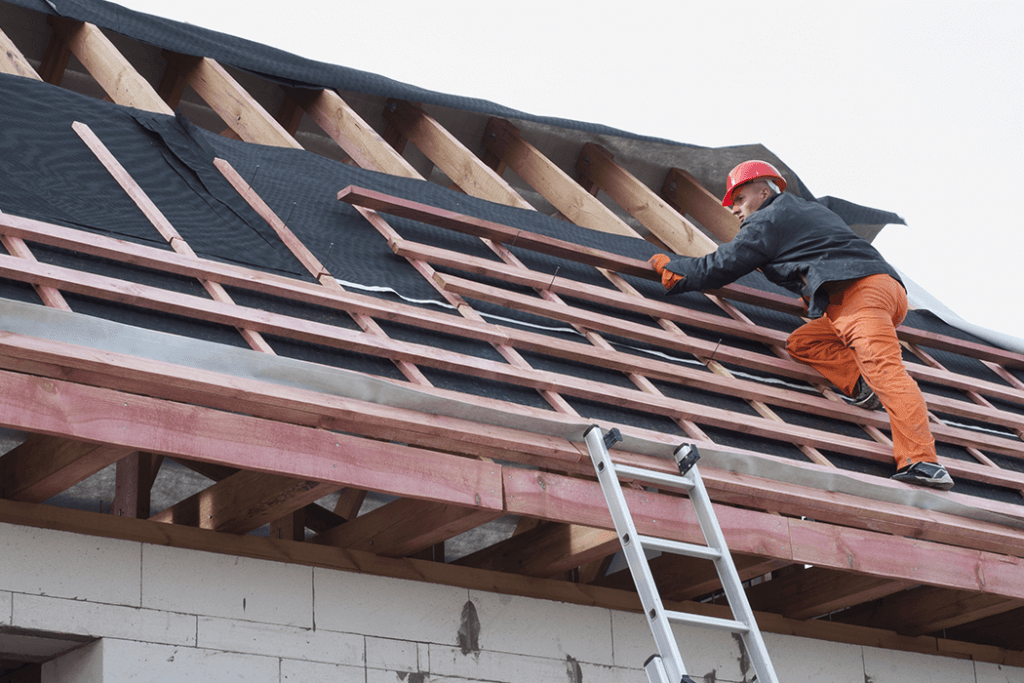5 Types of Roofs to Be Constructed by Roofers

Who is a roofer?
A roofer is a handyman, who works on top of buildings for installing, repairing, and maintaining roofs with a variety of materials. A leaky roof can damage the ceiling, furnishings, walls, etc. Repairing and replacing the old roofs with new ones, collectively make ups the majority of the work of roofers. A roofer is responsible for maintaining the roofs of both residential and commercial buildings.
- This process involves inspecting the roof for any damage and if there is a need for any repairs.
- Measuring the affected area for calculating the materials required
- Verifying the plan with the client for confirming the task and discussing the time required and what will be its cost
- Replacing and repairing of roof materials which include joists, plywood frames, tiles, and shingles
- Adding insulation and damp-proofing of the existing roofs
Installation of different types of roofs:
There are 3 different types of roofs: low-slope, steep slope, and sustainable. A roofer can specialize in one or all of these roof systems.
1. Low Slope Roofs:
Such types of roofs rise less than 3 inches per horizontal roof foot and are installed in layers. Most commercial, industrial and apartment buildings use such type and they make about two-thirds of all the roofs. These types of roofs are very strong and waterproof since they are made up of several layers of roofing materials that are stuck together with hot bitumen. But they do require regular cleaning, maintenance, and re-coating.
2. Steep-Slope:
They also rise less than 3 inches per horizontal roof foot and make up the remaining of the roof. These use asphalt shingles which are relatively less expensive than the other coatings. These work best with the other roofing types such as tiles and shingles. Plus, they have the ability to direct water away from the roof which prevents the excess rainfall and moisture from accumulating and causing damage to the house. One cannot install a steep slope themselves, therefore it is important that you let the professionals handle the work. They always have a plan in place when the replacement and maintenance of a roof are required.
3. Sustainable Roofing:
Many people get vegetation or solar panels installed on their roofs. Such utilization of roofs is called sustainable roofing. The landscape roofing system consists of single or multiple layers which are waterproof. On top of these leak-free roofs a root barrier is installed, on which a layer of soil is placed on which the vegetation is planted.
4. Solar Panels:
Installation of solar panels on top of roofs is becoming very popular nowadays. Solar panels basically absorb energy from the sun which is then converted into electricity. People are opting towards having solar panels installed on their roofs because it is a great way of re-using natural sunlight.
5. Flat Roofs:
People living in hot regions get flat roofs installed with a light color coating that directs the sun rays and UV heat away from the home, helping in regulating the indoor temperature at lower cost and energy use. It is a great way of reducing energy consumption and its expenses in a house.
What is the work environment of a roofer?
A roofer works in a strenuous environment with all types of weather conditions. They have to work in harsh types of weather conditions especially when making repairing the roof surface. Though, roofing work is not performed in the colder months as rain and snow can be deadly for the person working. They tend to complete most of their roof repairing and maintenance in the summer months as they know that working in the colder months will be difficult for them.
What is the education and training of a roofer?
Roofers usually take courses in mechanical drawing and basic mathematics. Although some roofers learn by working with experienced roofers some also undergo a 3-year apprentice training program. In this, they are taught about all the equipment needed for installing, maintaining, and repairing the roof with their usage, arithmetic, safety, and other topics. First, the trainees are taught how to carry the equipment, and then after 2-3 months, they are taught to measure, cut, trim and fit the roofing materials. Only those trainees can become roofers who have a good physical condition, are strong, and are not afraid of heights.
Is roof installation a dangerous task?
Working on high-roofs with hot substances such as bitumen is definitely a dangerous task. For this purpose, the roofers are trained before they are assigned any roof installation task. Certain safety equipment is also used for ensuring the safety of the roofer.







